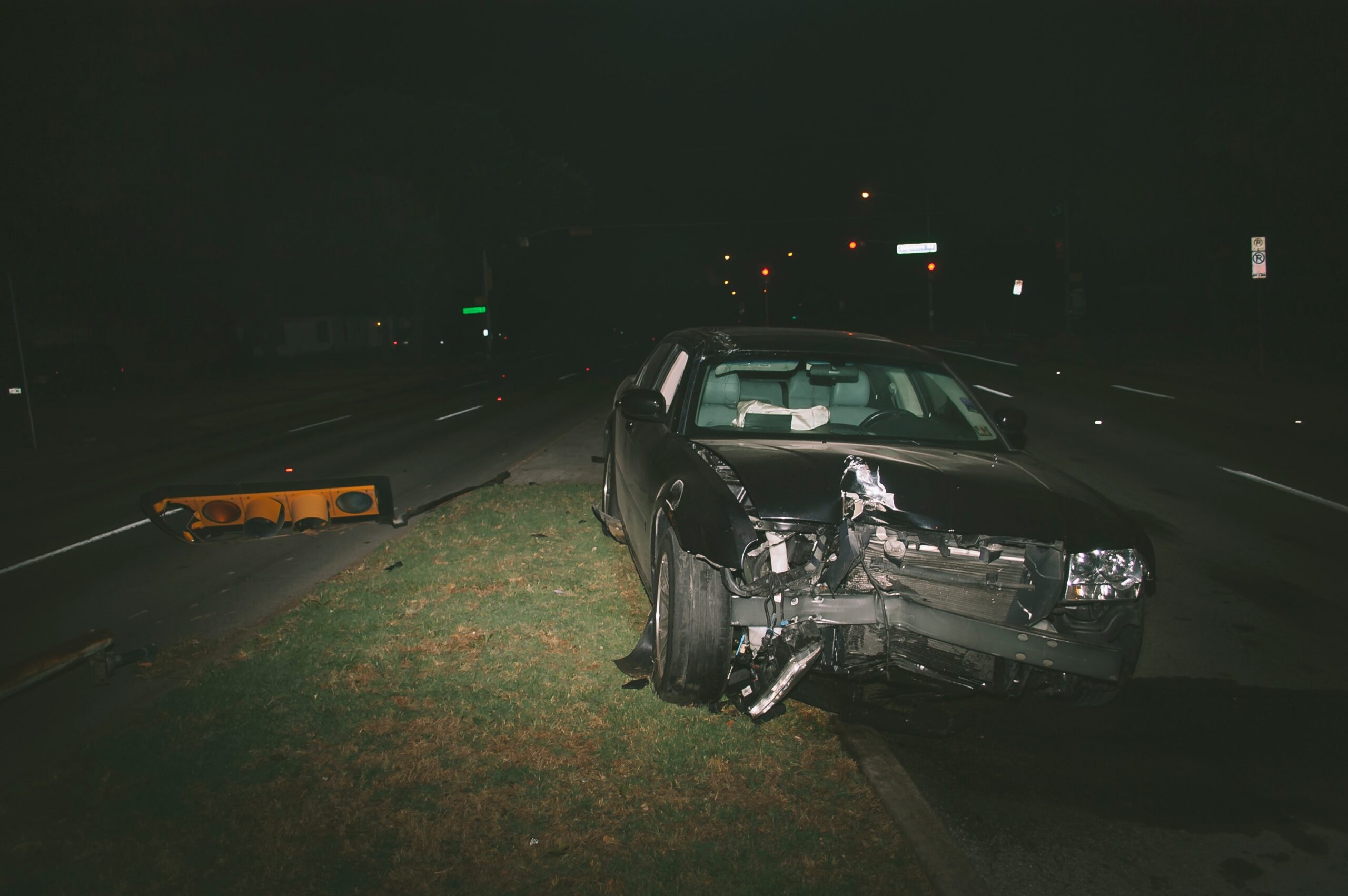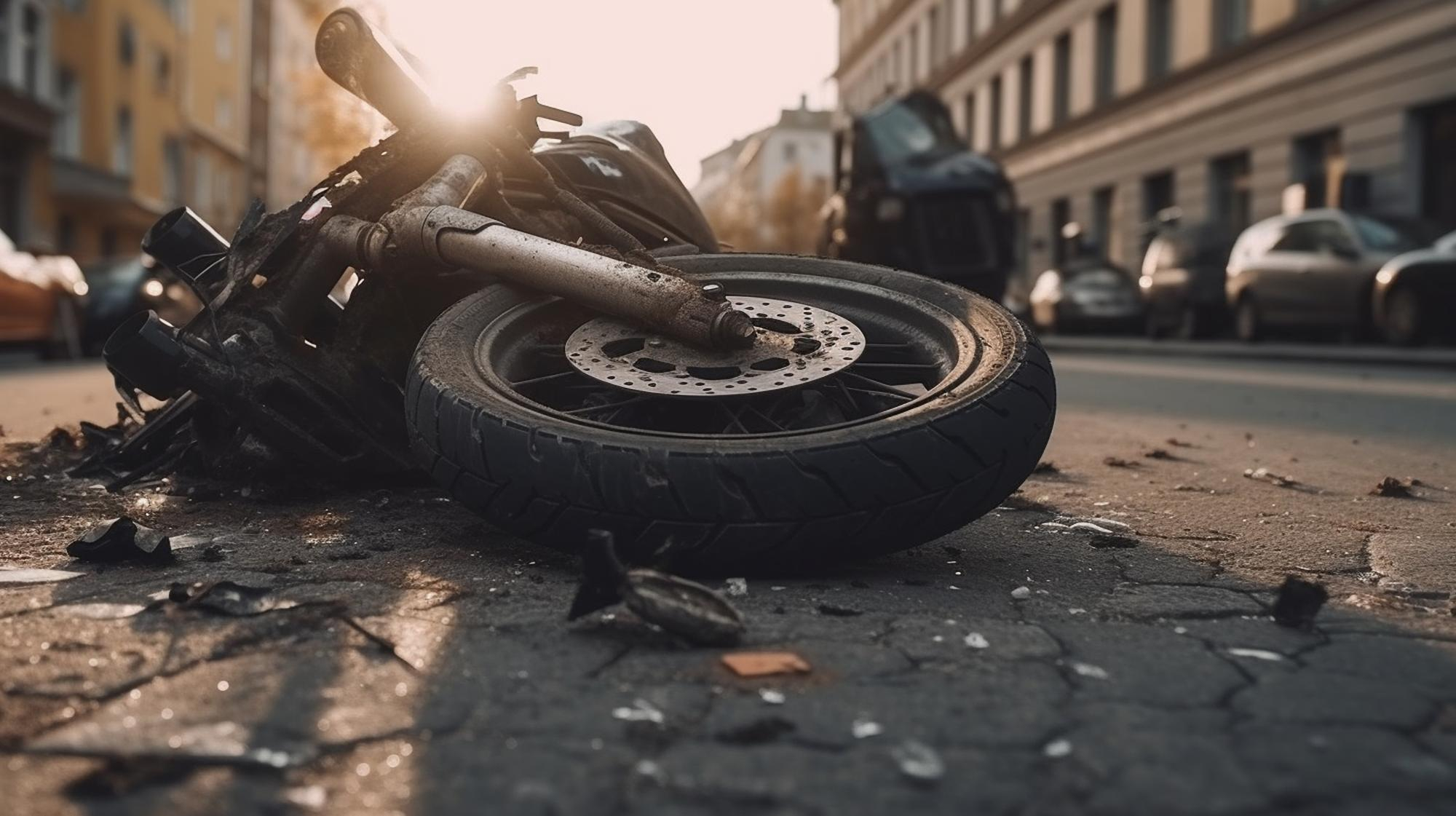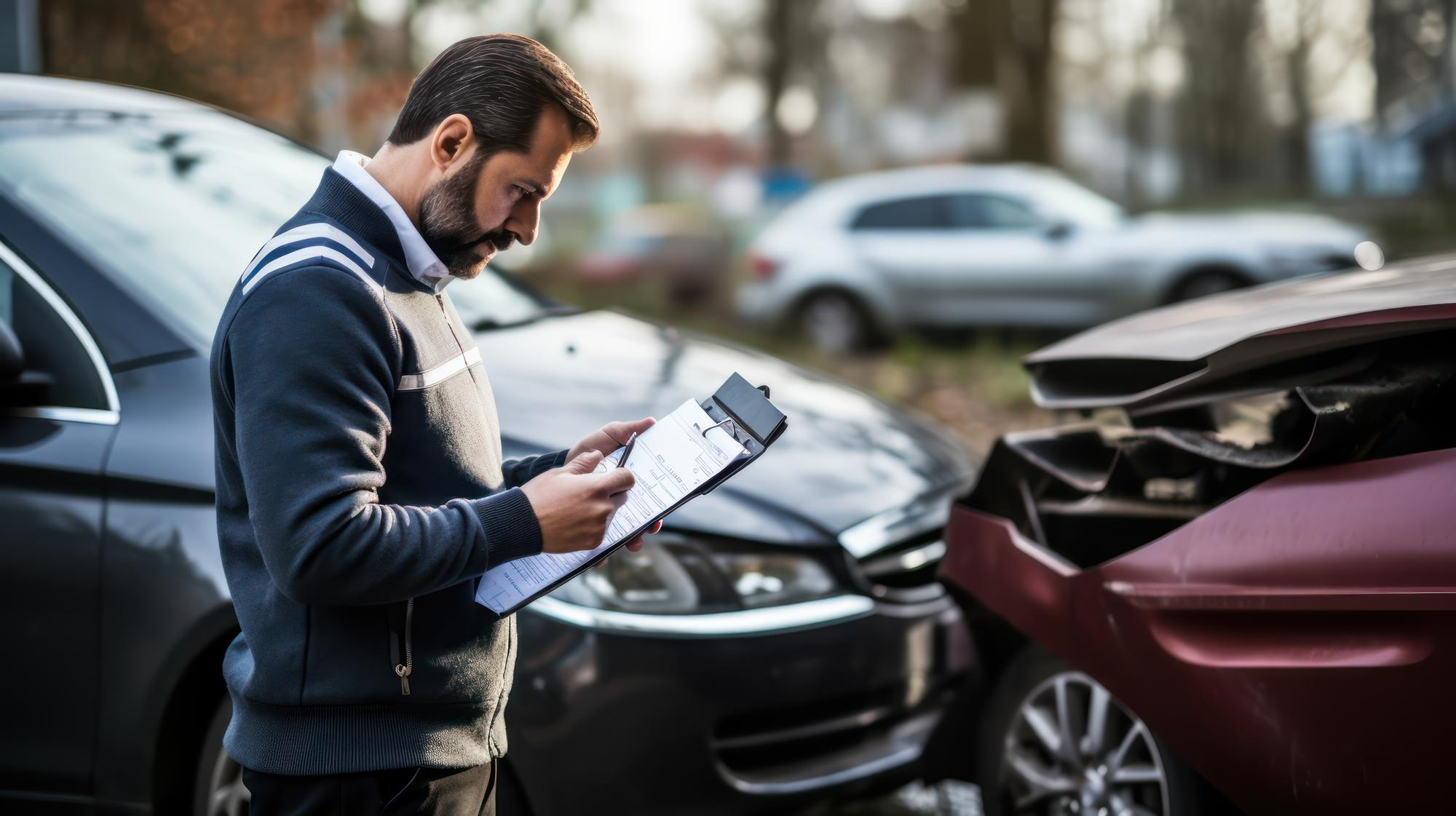Along with courtesy and common sense, right of way rules and laws help promote traffic safety. It is important to follow traffic safety rules whenever you are traveling on the road, respect the right of way of others, including pedestrians, bicyclists, and motorcyclists. California drivers must also respect the right of way of others by not breaking traffic laws including failing to stop at a traffic light or stop sign, making unsafe lane changes, speeding, or making illegal turns. In California, statistics show that right of way violations cause a large percentage of traffic injury crashes.
Failure to respect right of way laws can not only lead to an accident but can also leave victims with serious injuries. If you are driving in Los Angeles or anywhere in California, make sure you keep yourself and others on the road safe by following the right of way rules and laws.
California Right of Way Laws
California’s right of way laws determines the person that can proceed first when one or more drivers arrive at an intersection at the same time. Important California right of way laws you should know about include:
- California Vehicle Code (CVC) 21800 – This law states that a driver approaching an intersection must yield to the right of way in the following situations: (A) driver approaching an intersection must yield to a vehicle that already entered the intersection from a different highway; (B) when two vehicles approach an intersection at the same time from different directions, the driver on the left must yield to the driver on the right unless it’s a terminating highway (a highway that intersects, but doesn’t continue beyond the intersection with another highway that does continue beyond the intersection); (C) when an intersection is controlled by stop signs in all directions or if there are broken traffic lights at the intersection, the driver on the left must yield to the driver on the immediate right.
- California Vehicle Code (CVC) 21801 – (A) The driver intending to either make a legal U-turn or turning left must yield to all incoming traffic in the opposite direction. The driver should not initiate or continue turning until the traffic is at a safe distance away to make the turn; (B) if the driver making a U-turn or left turn has properly yielded, has turned on their signal and started to turn, then the approaching traffic should yield to the right of way to the turning vehicle.
- California Vehicle Code (CVC) 21802 – A driver must completely stop at an intersection with a stop sign and yield to drivers already at the intersection.
- California Vehicle Code (CVC) 21803 – Motorists who enter an intersection controlled by a yield sign must yield to other drivers who area already at the intersection.
- California Vehicle Code (CVC) 21804 – Motorists who enter a highway must yield to all traffic approaching the highway.
- California Vehicle Code (CVC) 21805 – Drivers must yield to horses at an officially designated equestrian crossing.
- California Vehicle Code (CVC) 21806 – A driver must yield to emergency vehicles when they are using sirens and at least one visible red light. An appropriate yield under this section is when the driver slows down and drives to the right-hand side of the road. The vehicle is to remain at a complete stop until the emergency vehicle passes.
- California Vehicle Code (CVC) 21950 – Drivers must yield to pedestrians who are crossing a roadway within an unmarked crosswalk at an intersection or lawfully within any crosswalk.
Right of way rules provide clear guidance for California motorists and helps promote traffic safety. This is especially helpful in traffic congested streets in places such as Los Angeles, Santa Monica, Beverly Hills, Orange County, Oxnard, Huntington Beach, Alhambra, Burbank, Costa Mesa, or Lancaster.
If you have been injured, call us today at (866) 936 7349 to schedule a free consultation
Right of Way Laws for Pedestrians
By definition, a pedestrian is a person who travels by foot. A person using a skateboard or roller skates can also be considered a pedestrian but not someone using a bicycle (cyclist). A pedestrian can also be someone with a disability who uses a wheelchair, tricycle, or quadricycle for transportation.
Drivers are required to drive carefully in areas where pedestrians are present and must follow right of way laws related to pedestrians including:
- Stopping for all pedestrians who are already in or entering a crosswalk, whether the crosswalk is marked by painted lines.
- Yielding to the right of way for pedestrians even if they’re jaywalking or not following safety rules.
- Allowing sufficient time for pedestrians to cross safely.
- Not passing a vehicle that has stopped at a crosswalk. There might be a pedestrian crossing the street that you’re unable to see from your view. Stop your vehicle and only proceed when all pedestrians have safely crossed the street.
- Never stop your vehicle inside a crosswalk– doing so puts pedestrians in danger.
- Never drive on a sidewalk except when crossing it to enter or exit an alley or driveway. Yield to all pedestrians when crossing.
- Being patient with pedestrians who are crossing with young children, older, disabled, or blind to cross since they might need more time to cross. Blind pedestrians depend on the sound of your vehicle and the sound of the pedestrian signal to know when it’s safe to cross the street. It’s important that you stop your car within five feet of the crosswalk. Drivers in a hybrid or electric car must be especially aware of their location since the lack of engine or electric motor noise might cause a blind pedestrian to wrongfully assume there are no cars nearby.
Keep in mind that if a pedestrian makes eye contact with you, they’re ready to cross the street. Follow the right of way law and yield to the pedestrian by allowing them to cross safely.
Right of Way Rules at Crosswalks
A crosswalk is defined as the part of the roadway distinctly indicated for pedestrian crossing by markings or lines on the surface. Right of way rules at crosswalks include:
- Do not pass a vehicle that has stopped at a crosswalk.
- Do not stop in a crosswalk since doing so can block a pedestrian’s right of way path to cross the street.
- Yield to blind pedestrians who extend their cane to indicate that they want to enter the crosswalk.
- Make sure your vehicle is five feet from the crosswalk, so pedestrians have enough space to cross safely.
- When you’re required to stop at a sign or signal, you must stop before the stop line, stop sign, signal, or crosswalk.
Not all crosswalks are marked. Whether in marked or unmarked crosswalks, pedestrians have the right of way. However, even though pedestrians have the right of way, they still must follow rules of the road.
Right of Way Rules at Intersections
An intersection is defined as an area where one line of a roadway meets another roadway. Side streets, cross streets, freeway entrances, alleys, and any location where vehicles travel on different roads or highways join are considered intersections.
Below are right of way rules pertaining to intersections you should know about:
- At an intersection without a yield or stop sign, reduce your speed and prepare to stop. Yield to pedestrians and traffic who are already in the intersection or entering the intersection. Additionally, if a vehicle or bicycle arrives at the intersection at the same time as you did, yield to the vehicle or bicycle on your right. If the vehicle or bicycle arrived first at the intersection, you must yield to it.
- At “T” intersection without a yield or stop sign, you must yield to pedestrians and traffic on the through road as they have the right of way.
- When making a left turn, you must give vehicles approaching that are close enough to be dangerous the right of way. Don’t forget to look for pedestrians, bicyclists, and motorcyclists.
- When making a right turn, make sure you check for pedestrians looking to cross the street. Don’t forget to check for bicyclists riding next to you.
- On highways with multiple lanes or divided highways, look for oncoming traffic coming in any lane you want to cross. Only make a right or left turn when it is safe to do so.
- If you are leaving a parking lot or parked on the side of a road, yield to traffic flow before you get back on the road.
- When there are stop signs at all corners, the first thing you should do is stop. Next, follow the rules listed above.
Right of Way Rules at “T” Intersections
Generally, when two vehicles reach an intersection at the same time, the vehicle on the right side should go first because they have the right of way. However, there are exceptions such as when you are at a “T” intersection.
A “T” intersection is a three-way meeting point where three roads come together and creates a “T” shape. Drivers traveling on the road that has a stop sign are required to stop until all vehicles have passed through the intersection. If a stop sign isn’t present, vehicles on the through road will have the right of way. Drivers traveling on the road that ends are required to stop.
Right of Way Rules Using Traffic Signals and Signs
When there are traffic signs or signs to indicate the right of way at an intersection, they must be followed. Here’s what you should know about how the right of way works with signals and signs:
- Stop sign – When a stop sign is present at an intersection, you must stop completely and only proceed when it is safe to do so. Vehicles traveling from the direction without a stop sign have the right of way. If two or more vehicles come to an intersection with a four way stop at the same time, the vehicle on the right has the right of way after stopping.
- Yield sign – If there is a yield sign present, the vehicle approaching the yield sign is required to slow down and proceed with caution; any vehicle traveling on the intersecting road have the right of way. You may only proceed without stopping if you can clearly see that there are no vehicles approaching the intersection from the intersecting road.
- Flashing red light – Treat this like a stop sign. Stop and yield to traffic coming in from the intersecting road.
- Flashing yellow light – Proceed cautiously through the intersection.
- Broken traffic signal – If the traffic signal isn’t working, treat this like there are stop signs in all directions. Prepare to stop before entering the intersection and only proceed when it is safe to do so. If several vehicles reach the intersection at the same time, the vehicle on the right has the right of way.
If you have been injured, call us today at (866) 936 7349 to schedule a free consultation
Right of Way Rules When Making a Left-Hand Turn
When a driver wants to make a left-hand turn at an intersection, he or she should obey the following right of way rules:
- Wait for the traffic light to turn green before making the left-hand turn.
- If there is no left turn arrow, the oncoming traffic will have the right of way.
- If there is a left turn arrow, stay stopped until the arrow turns green.
- When making a U-turn, yield to any vehicles that are turning right.
Right of Way Rules at Roundabouts
A roundabout is a circular intersection where road traffic is allowed to flow in one direction around a center island. In roundabouts, there are no bicycle lanes. All types of vehicles must share the road. Any vehicle entering or exiting a roundabout must yield to any traffic including pedestrians.
The following rules must be obeyed when approaching a roundabout:
- Slow down as you’re approaching the roundabout.
- Yield to bicyclists and pedestrians crossing the roadway.
- Look out for signs or pavement markings that prohibit certain movements or guide you.
- Enter the roundabout on the right side when there enough space in the traffic for you to merge safely.
- Travel in a counterclockwise direction. Do not stop in the Do not pass other vehicles. Doing so increases the probability of a car accident.
- Use your turn signals when changing lanes or exiting the roundabout.
- If you missed your exit, continue traveling through the roundabout until you’re arrived back at your exit. If a roundabout has multiple lanes, select your entry, or exit lane based on your destination.
Right of Way on Mountain Roads
From southern to northern California, the Golden State offers some of the most scenic drives in the country. However, driving on mountains can be dangerous and drivers should always follow traffic safety rules.
In California, the law states that when there are two vehicles traveling on a steep road where neither vehicle can pass, the vehicle facing downhill should yield to the right of way to the vehicle facing uphill. The vehicle facing downhill might have to back up to allow more room for the uphill-facing vehicle.
Other Right of Way Rules
Most of California’s right of way rules pertain to pedestrians or situations where vehicles meet at an intersection. However, there are other less common scenarios where the right of way rules applies as well including:
- Moving emergency vehicles – Whenever you see or hear an emergency vehicle such as an ambulance, fire truck, or police car flashing its lights or sounding its sirens, you must yield to the right of way to the emergency vehicle. Pull over to the side of the road and don’t block the intersection. Remain stopped and do not continue driving until the vehicle has completely passed. If you are driving in a high-occupancy vehicle (HOV) lane, also referred to as the carpool or diamond lane, and an emergency vehicle approaches from behind, you must exit the carpool lane to let the emergency vehicle pass. In this situation, you are allowed to cross over the double yellow lines to do so.
- Stationary tow trucks or emergency vehicles – Unless given other directions from a peace officer, when you’re approaching a stationary tow truck, emergency vehicle, or Cal Trans vehicle on the road with flashing lights, change lanes when it’s safe so you are no longer driving in the lane immediately beside the stopped vehicle. If you’re unable to switch lanes safely, slow down as you’re driving pass the vehicle.
- Joining traffic from a non-road or crossing – When you’re joining traffic from an alley, driveway, or other non-road, California right of way rule states that you must yield to the oncoming traffic until it’s safe to proceed. If you’ve properly signaled and entered the road when it is safe, you will have the right of way and other vehicles must yield to you.
- Horse crossings – At an intersection or path marked by equestrian crossing, you must yield to horses that have already entered the intersection. Horseback riders have the right of way to cross the road safely and oncoming traffic must yield.
Penalties for Failure to Yield
Failure to yield can not only increase the chances of a car accident, but there are other consequences as well. If you fail to yield to the right of way in California, you will automatically receive a one-point penalty assessed against your DMV driving record. You will also receive a fine of $238 or more, depending on the county and court. Keep in mind that points assessed to you driving record will be reported to your auto insurance carrier. Typically, this will result in an increase in your auto insurance rate for several years.
If you have been injured, call us today at (866) 936 7349 to schedule a free consultation
Schedule a Consultation If You Have Been in a Car Accident Due to Someone Violating Right of Way Rules
Since right of way rules are complex, it can be challenging to determine the party who had the right of way in certain situations. However, any violation of right of way rules can result in car and pedestrian accidents. Victims can sustain various degrees of injuries ranging from minor bruises to serious, long-lasting injuries. If you have been hurt or injured in a right of way accident, contact our car accident lawyers for help. Our experienced legal team can evaluate your accident case and help you explore your legal options.
At Mesriani Law Firm, we have over 20 years of experience helping car accident victims get the justice they deserve. We have successfully recovered over $100 million for our clients and have consistently obtain the maximum compensation. Whether you were injured in Los Angeles or anywhere in California, we can represent you against the negligent party and help you move forward. We accept clients on a contingency basis and do not charge you anything if we do not win your case. There is strict deadline for filing personal injury claims so do not wait to start your claim. Contact our law office today at (866) 500-7070 to schedule your free consultation.
Right Away Rules FAQs
How does California law define right of way?
Right of way helps determine the party that is allowed to go first in scenarios where vehicles, cyclists, and pedestrians meet on the road. The party with the right of way can go first and other parties must wait for the party who has the right of way. State statues outlines various circumstances when drivers must yield to the right of way. Most states, including California, grant pedestrians the right of way. For example, California Vehicle Code (CVC) 21950 states that drivers must yield to pedestrians who are crossing a roadway within an unmarked crosswalk at an intersection or lawfully within any crosswalk.
What are the rules on right of way?
California has several right of way rules to help prevent collisions. When respecting the right of way of others, one must carefully yield to pedestrians in crosswalks and other vehicles. Additionally, drivers must obey right of way rules related to using traffic signs and signals, making a left-hand turn, driving at a roundabout, driving on mountain roads, and other various driving situations. More information about the laws and right of way driving rules can be found in the California driver handbook.
Who has right of way at a 4 way stop California?
In California, drivers should cross an intersection in the order they arrived. So, at a four way stop sign, the driver that arrived first and stopped has the right of way and is first person allowed to advance. The driver who arrived second should proceed only after the first driver has passed. If two or more vehicles come to an intersection with a four way stop at the same time, the vehicle on the right has the right of way after stopping.
Who has the right of way on a hill in California?
In California, the law states that when there are two vehicles traveling on a steep road where neither vehicle can pass, the vehicle facing downhill should yield to the right of way to the vehicle facing uphill. The vehicle facing downhill might have to back up to allow more room for the uphill-facing vehicle.








